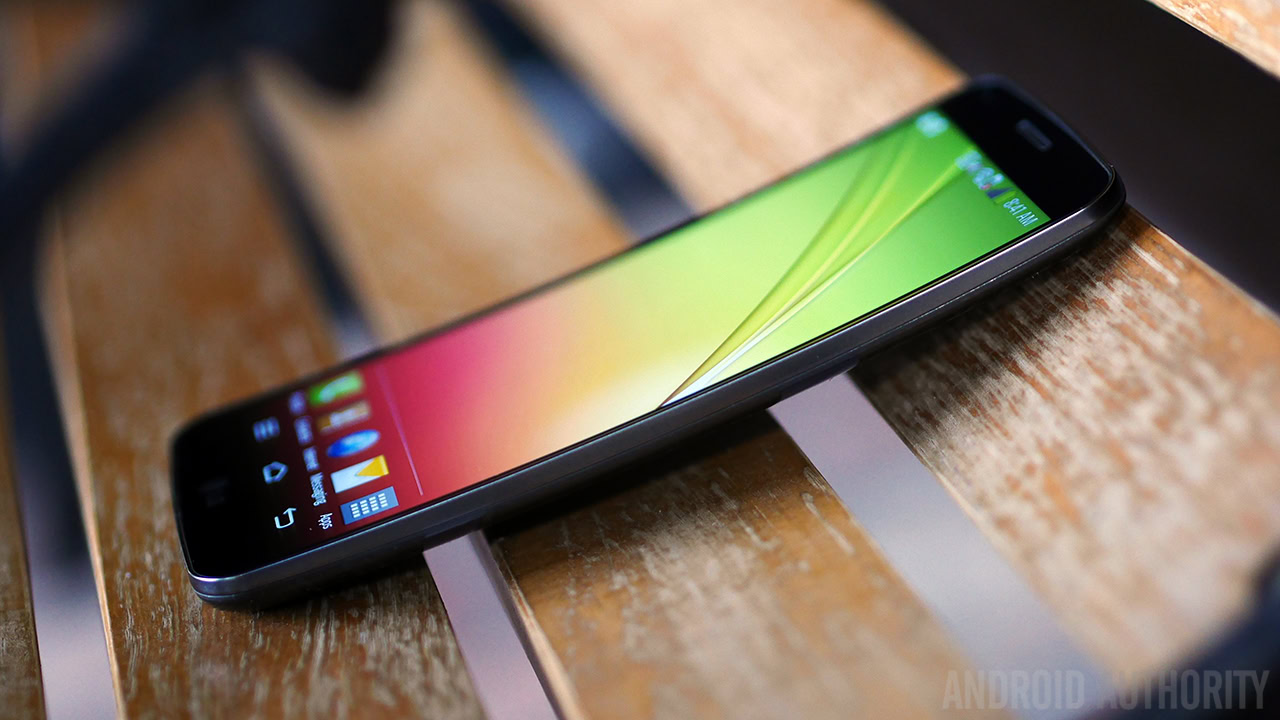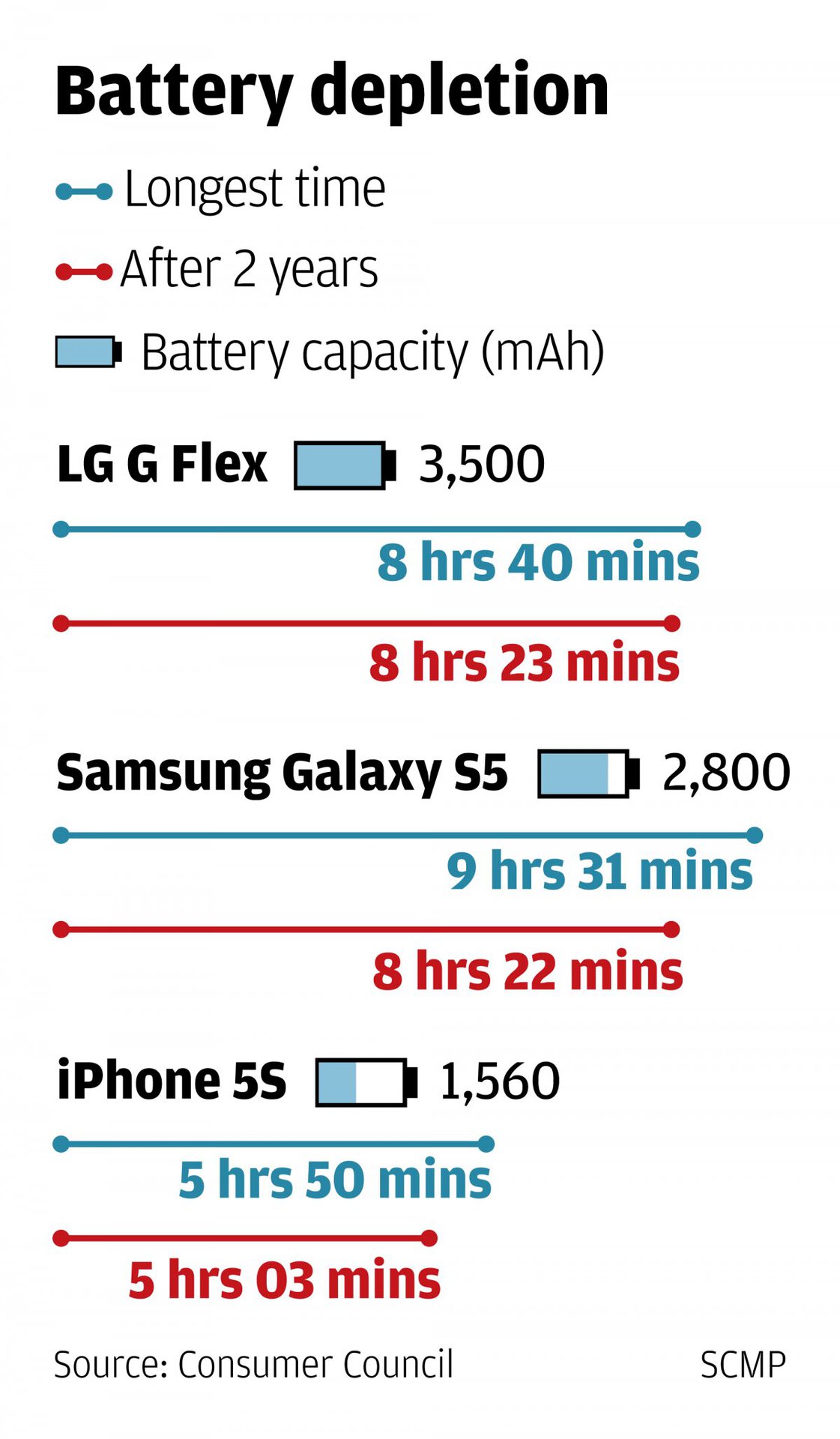Affiliate links on Android Authority may earn us a commission. Learn more.
G Flex outranks Galaxy S5, iPhone 5s in battery longevity survey

Phone manufacturers have to make a clear choice when they design devices. They can add a little more capacity to the battery, or they can shave off an extra millimeter or two from the phone’s thickness. Sadly, millimeters trump milliampere-hours in most cases. Coupled with the rise of power-thirsty high-definition displays, that has made battery life an area of the user experience that has stagnated or even regressed over the years.
[related_videos align=”left” type=”custom” videos=”598219,589166″]
More than that, battery life actually worsens over time, due to the inherent decay of the cathode inside. But how bad is this decay? Consumer Council, a consumer watchdog based in Hong Kong, teamed up with the International Consumer Research and Testing (ICRT) to find out.
The research group tried to replicate the effect that two years of typical charge-discharge cycles would have on the battery life of eight smartphones. To do so, researchers assumed an average of 365 charges (once every two days) and ran standardized benchmarks on the devices until battery life hit 20 percent. After that, the devices were recharged and the cycle repeated.

The researchers then compared the battery life achieved when the battery was new to the battery life after a simulated two years of use.
ICRT found that there are substantial differences between the best (smallest drop) and the worst (largest drop) performing batteries. LG’s G Flex ranked first, with a drop of just 3% – from 8h:40m to 8h:23m. Nokia‘s Lumia 1020 fared worst, with a massive 20% drop, from 8h:10m to 6h:32m.
Consumer Council revealed the results for two other high-profile devices: the Galaxy S5 went from 9h:31m to 8h:22m (about 12% drop) and the iPhone 5s went from 5h:50m to 5h:03m (13.5% drop). Unfortunately, the results for the other four phones that were tested have not been revealed, though Consumer Council said that only the Lumia 1020 was worse than 15%.
It’s important to note that the actual decay of battery performance in time may be influenced by factors such as operating temperature or the user’s habits (e.g.: short charging sessions vs all-night charging).
With most phone makers now opting for non-user replaceable batteries, the longevity of batteries is increasingly important. The good news is a well-functioning device should not lose more than 15% of its capacity over a two-year period.
If the battery decays faster than that, you may be entitled to a replacement, depending on the warranty policy of your manufacturer. Just today, we reported that Samsung will replace the battery inside the Galaxy S6 for free if the battery loses more than 20% of its capacity within a year. After that, replacing the battery will cost you $45+shipping. Other manufacturers offer six months of warranty for their batteries, though the warranty of the device may be longer.
What’s your experience with battery decay over time?